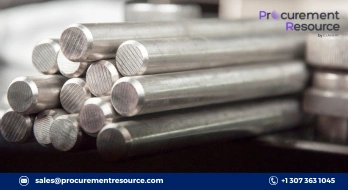The Near-Term Outlook For The U.S. Steel Market Continues To Be Positive
.webp)
The Near-Term Outlook For Steel Looks Bullish In The U.S.
The Raw Steels Monthly Metals Index (MMI) swayed between March and April, with a meagre increase of 0.65%. A sharp reverse in the prices of downside for Midwest HRC's future put extra stress on the index.
In the meantime, price action for HRC persisted to increase this month, with the HRC rally yet to display a significant slowdown. Regarding the current rally's strength, prices of steel might persist in rising in the near term. This should keep up till a bearish trend or turnaround takes place.
Prices Of Steel In The U.S. Stay Bullish After A Storm Of Price Rises
The climb in prices for U.S. flat-rolled steel stays clearly bullish. The four-month-long uptrend revved all through March, with respective prices for HRC, CRC, and HDG advancing by 33%, 27%, and 25%. Remarkably, prices for HRC are now at USD 300/st, shy of their peak in April.
Request Access For Regular Price Update of Steel
In the meantime, steelmakers kept on capitalizing on bullish prices of flat-rolled steel with a fresh hike in prices. For instance, all NLMK, Nucor, ArcelorMittal, Cleveland Cliffs and Evraz North America together increased their prices for flat-rolled steel all through March. On April 3, Cliffs provided its fifth spike since the beginning of 2023, bringing the minimum price for its hot rolled coil to USD 1,300/st.
Mill Lead Duration Extends As Steelmakers Deal With Outages
The upward movement in prices of steel caught onto buyers as well as service centres since most of them were working to clear inventories during the end of last year prior to an anticipated U.S. downturn.
There was slight caution about the apparently quick shift from the supply glut witnessed all through 2022 to the recent undersupply in the market. By 2022-end, the continuous ramp-ups from the latest and expanded mills, including SDI Sinton and Nucor Gallatin, emerged as balanced to aggravate the once-oversupplied market.
But those ramp-ups allegedly did not perform well. In the meantime, the U.S. economy was proven to be far more resilient compared to the expectation. Steelmakers exercised strict control over the levels of production as well, decreasing rates of capacity utilization below 80%. To add further pressure, the import levels for HRC, CRC, and HDG have mainly moved downward since 2021-end.
The present market tightness has caused extended mill lead periods across all steel types. HRC lead times near March have hit their peak since June 2021. In the meantime, supply for steel will witness further brief restrictions as many mills, including BlueScope, NLMK USA, Nucor, and SDI, persist in operating through scheduled outages. These outages will not just extend into early May however will slash domestic production levels by an evaluated 331,000 short tons as well.
Manufacturing Decreases As Demand Reduces On The Back Of An Economic Slowdown
Demand headwinds persist building in the U.S., leaving buyers hesitant to enforce forward purchases, even as prices of steel soar. In March, the manufacturing sector in the U.S. stayed contracted for the fifth consecutive month. In the meantime, the ISM Manufacturing PMI lowered to 46.3 from 47.7 in February. Since May 2020, this has been observed as the lowest reading. Particularly, the New Orders Index slid more in-depth into a squeeze, recording 2.7 percentage points at 44.3, which is lower compared to last month.
This definitely indicates a deceleration for some parts of the U.S. economy. Moreover, the banking trouble that started with the collapse of Silicon Valley Bank a month ago will likely restrain lending. In addition, the slash in output declared by OPEC+ earlier led to a hike in the prices of oil, which will stress inflation and support a hawkish Fed.
HRC Futures Prices Flop: Will Prices of Hot Rolled Coil Prices Peak?
In the middle of compounding financial risks in the U.S., prices for HRC's future reached a peak on March 10 prior to its switch to the downside. Future prices maintain a firm 94.1% correlation with HRC steel costs. This makes the former a dependable indicator for the HRC price direction. By March-end, the market switched slightly downward. Since November, Future prices have dropped below spot prices for the first time.
Read More About Steel Production Cost Reports - REQUEST FREE SAMPLE COPY IN PDF
Whilst a bullish indicator, backwardation doesn't always signify that spot prices will instantly start falling. But, it does indicate that markets anticipate the recent uptrend for flat-rolled steel to have shrunk this hike. As a consequence, prices might display indications of exhaustion soon.
According to the article by Procurement Resource, the present raw steel outlook in the U.S. looks bullish, backed by a string of price increases for HRC, CRC, and HDG, advancing by 33%, 27%, and 25%, respectively.
The spikes came as a surprise for both buyers and service centres. In the meantime, the U.S. economy was proven to be far more resilient compared to the expectation. Steelmakers exercised strict control on production levels. However, HRC steel futures are expected to slump after peaking in March.




.webp)